I’m usually a step behind most pop-culture phenomenons. So true to form I just finished my reading of The Hunger Games series and watched the first movie. Here is my one-sentence synopsis of the series for those who care to know: The first book sucks you in, and the last book, well… sucks. Despite that fact I can still say that I enjoyed the series and would recommend it. Although they are nowhere near as sophisticated as Harry Potter (don’t you dis my Potter love!), the books are far more compelling than the other major love-triangle story that we all love to hate: Twilight. Katniss is much more reasonable than Bella and she has my respect. But beyond the relationship between The Hunger Games and other popular series, I’d like to give a few brief thoughts from my recent reading of The Hunger Games. Now I’m completely new to HG fandom so please excuse me if I cover well-travelled territory with this post. Though I hope you’ll indulge me for a moment (although if someone has said what I’m saying before do let me know. Then I won’t bother thinking that my assessment of The Hunger Games is interesting).
***SPOILER ALERT: ONLY PROCEED IF YOU’VE READ ALL THREE BOOKS FROM THE HUNGER GAMES SERIES***
What I assume is apparent to every reader is that the dystopian climate of The Hunger Games reflects a society much like ancient Rome (though of course there is a piercing critique of America in all this, as Carrie Allen rightly explained). The Roman backdrop is made blindingly obvious through the many Roman names chosen for the characters (e.g. Plutarch Heavensbee, Seneca Crane, Caesar Flickerman, Castor and Pollux, Claudius Templesmith, Octavia, Flavius, Dr. Aurelius, etc…), the fact that the enforcers of the Capitol’s legislation are called “Peacekeepers,” which corresponds with the Pax Romana (the peace of Rome) that was lauded throughout the ancient world, and there is an explicit latin reference in Mockingjay with a comment about Rome (Panem et Circenses). Furthermore, the blood-thirsty Capitol and their annual “Hunger Games” recall the ancient gladitorial matches, such as those in the Colosseum. However I think there are two further points to make regarding the Roman background (again, to some this may be more obvious). These points are not so theological in nature but reflect historical background that is relevant for biblical studies.
1) The Societal Function of The Annual Games
The relationship between the Hunger Games and the previous Rebellion against the Capitol resembles the Roman Gladiator matches. Not simply in regards to how on-lookers cheer on bloody deaths, but in how the gladitorial matches function in relation to “civilized” society. The gladitorial fights were re-enactments of former wars, mythological battles, etc… This coheres with the Hunger Games as a reminder of the former Rebellion. Additionally, the gladitorial matches were often comprised of “uncivilized” fighters or the rebellious within society: the prisoners. Thus, the gladitorial matches were a way to demonstrate the continual defeat of lawlessness [1]. The Hunger Games are designed in the same way. The victor must defeat the tributes from the representative districts, thereby reenacting the original rebellion battle.
Intriguingly, in the first book, there is a reference to a former tribute called Titus. He is a savage and resorts to cannibalism during the Games. It is suggested that the Capitol may have caused his death after he won (by avalanche). This is key for what I’m suggesting since it further demonstrates that the aim of the Hunger Games is to curb lawlessness. The victor of the Games embodies the Capitol’s victory over lawlessness, thus the Capitol could never allow a savage like Titus to be the victor.
After the first Games are over, Cinna puts Katniss in an outfit that is “sophisticated” and makes her look “girlish” and “innocent.” In one word: civilized. This is the goal of Hunger Games. The rebellious warriors emerge from the Games reinstated into society. They emerge as a co-victor over the rebellious other and become instated into the larger polis. This is really explicit in the film when Caesar Flickerman and Claudius Templesmith watched footage of an earlier Hunger Games and Caesar declares that his favorite part is watching that moment when the tribute becomes a victor. The transformation means that the tribute has now become one of them.
This is precisely why in Catching Fire the Capitol becomes saddened that the victors are returning to the Hunger Games in the 75th anniversary of the Games: the Quarter Quell. The reason why they are saddened by the victor’s reapperance into the games, versus the multiple children tributes throughout the years, is because each victor is one of them. They have emerged from the Games as full initiates into society.
2) Katniss is Diana/Artemis
Early on in my reading of the first book, when the Roman coincidences became apparent, I was immediately struck by how much Katniss resembled the goddess Diana: the Virgin goddess of the hunt, often depicted with a hunting dog in most sculptures. Here is a photo of her that I took while visiting the Vatican.
The correspondence between Diana and Katniss goes beyond the fact that both are archers. Diana was a virgin goddess. This coheres with the way that Katniss is so hesitant about being in a romantic relationship with either Peeta or Gale throughout the series. Additionally, it matches well with the way that she often declares that she will never have kids. Now intriguingly, at this point I think there may be something really interesting going on behind the scenes. The strangest bit about the cult of Diana is that in Rome she is a virgin huntress, yet in Ephesus she is an entirely different sort of goddess. Note the pictures below which I took while visiting Ephesus.
This is Artemis. A Temple was dedicated to her in Ephesus which was one of the wonders of the ancient world (though now it lies in ruins). Yet this is the same deity as Diana of Rome, just in her Ephesian context in Asia Minor. Note especially the bulbous pods that protrude from her chest in the pictures above. Scholars have scratched their heads about these pods for years, suggesting as options (a) breasts, (b) eggs, (c) grapes, and (d) bull testicles. Personally, after visiting Ephesus I was struck by all the bull iconography throughout the ruins of the ancient city and have become slightly persuaded in that direction. But regardless of what they actually depict, it is clear that each of these suggestions all have one thing in common: they are images of fertility.
So, here’s how this relates to The Hunger Games. Like Diana, when Rome is in the picture (=The Capitol), Katniss is a Virgin Huntress. Yet, when Rome (the Capitol) is removed, she revokes her earlier declarations of childlessness and begins a family with Peeta (i.e. she becomes the Ephesian Artemis). Coincidence? I don’t think so! Of course, Katniss doesn’t become a fertility monster at the end of Mockingjay, but she does begin having children with Peeta (I think it’s implied she’ll have more). This is a far cry from her declarations when she was in Rome (i.e. the Capitol).
Conclusion
Now I’d like to hear from the real HG fans. Is this helpful? Let me know if there are more interesting tidbits that I didn’t pick up on!
[1] I am indebted to Brigette Kahl’s Galatians Re-Imagined: Reading with the Eyes of the Vanquished for her helpful articulation of Roman ideology.


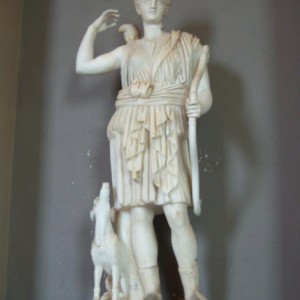
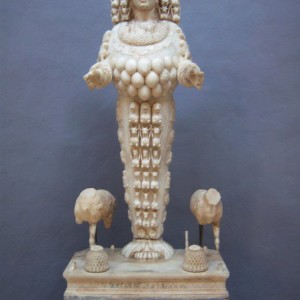
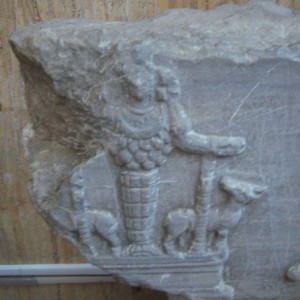
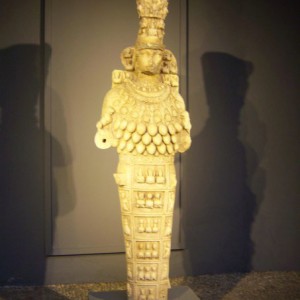
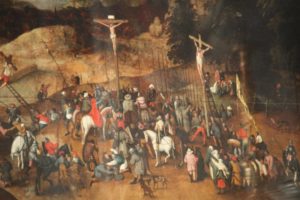

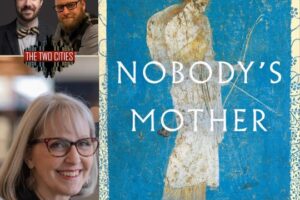
2 Comments
Leave your reply.